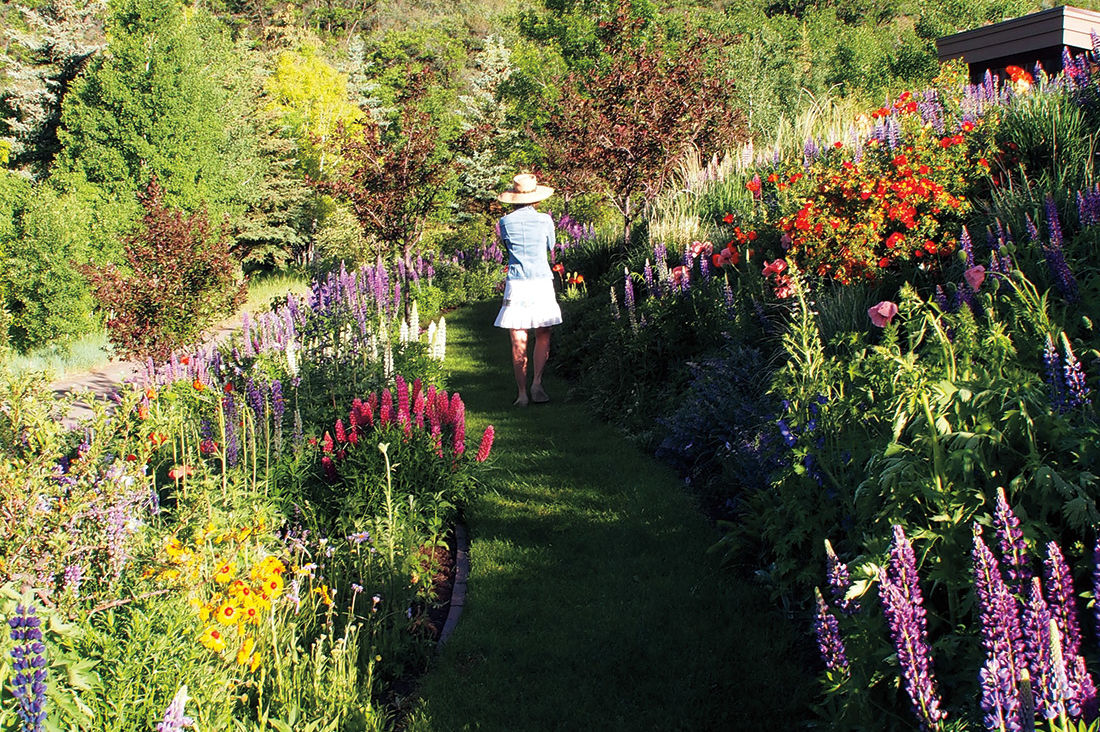
This Woody Creek Garden Is a Green Dream for Spring

The author strolling a path in the southern garden among lupine, copper roses, columbines, and Oriental poppies.
Image: Daniel Shaw
Six years ago, I was in some distress. My mother had just been diagnosed with terminal cancer, and I was trying to function against a few setbacks. I had two small children, a beautiful new house, a whopping mortgage, and a disastrous landscape. My husband and I had hired a landscape designer, who was once a close friend, and his highly recommended contractor to both resurrect the postconstruction wasteland that surrounded our home and to craft an environmentally conscientious garden to balance it.
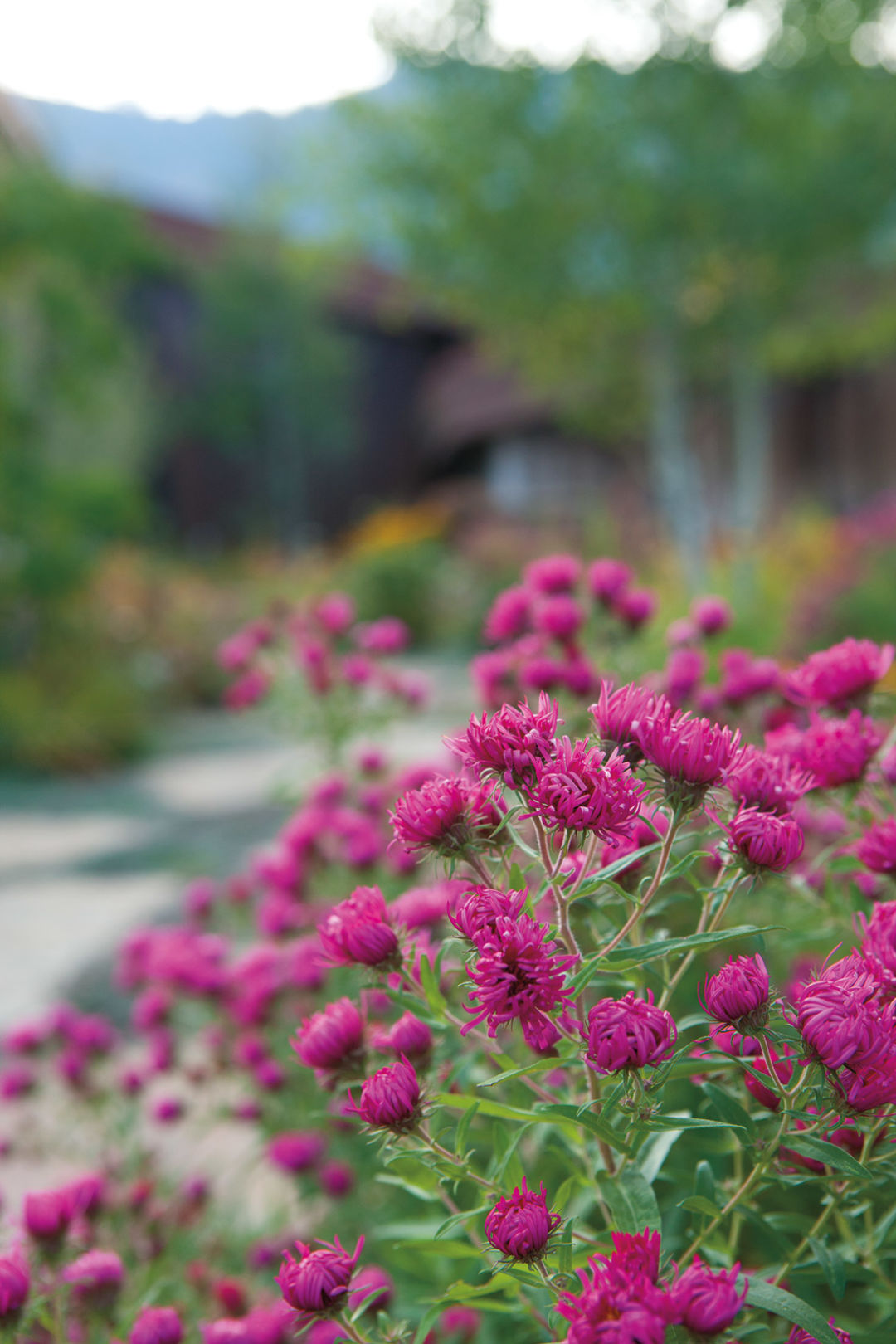
Image: Jason Dewey
Instead, we found ourselves in a whole heap of trouble. To make matters worse, I had been too distracted by my own immediate tragedy and had too much faith in the friendship (coupled with construction fatigue from the new house) to comprehend what was happening. When we began to realize the truth, we were alone with a moonscape at the close of the summer.
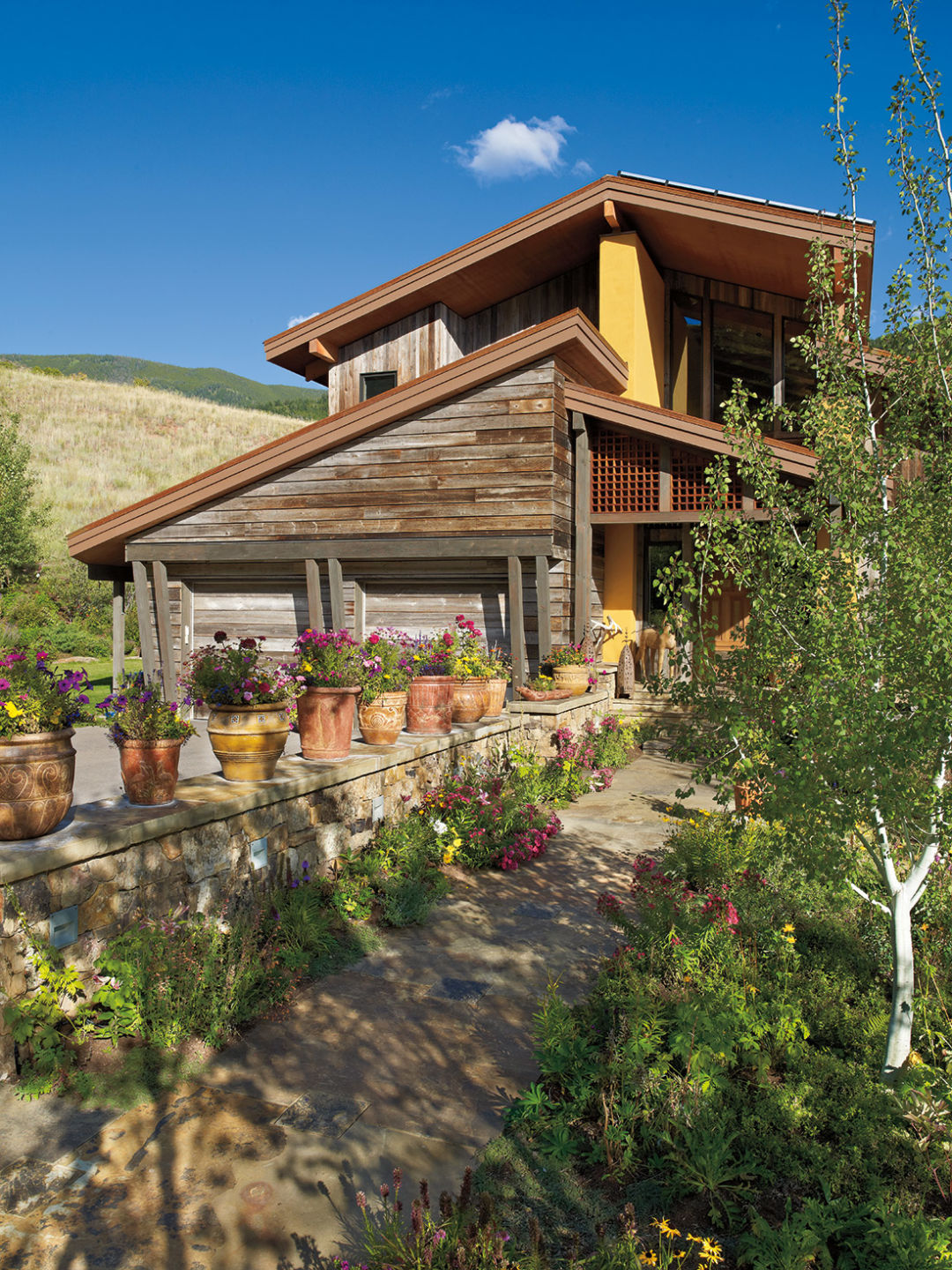
Potted annuals—including jasmine, the author’s late mother’s favorite flower—mark the home’s entrance
Image: Jason Dewey
The following spring revealed the worst of the perfidy. The heart of the problem was the existing soil: it was strapped for nutrients. It had never been properly replaced, just tidied over with mulch. Ninety percent of the trees and plants were dead. The mulch soon washed away to reveal the original damaged soil, and consequently the new plants were either stressed or gone. The irrigation system hiccupped and then broke down altogether over time—a gift that kept on giving.
It all felt like a metaphor for my mother’s impending departure. While we could have pursued litigation, we decided against it because of both the emotional and financial toll, and because I wanted to nurse my mother, not a lawsuit.
One day, while I was whining to my sister over the phone about how wretchedly we had been treated, how we were victims, et cetera, et cetera, she finally stopped my self-indulgent monologue: “Isa, you are nothing if not resourceful, so get to work.”
That was the kick I needed.
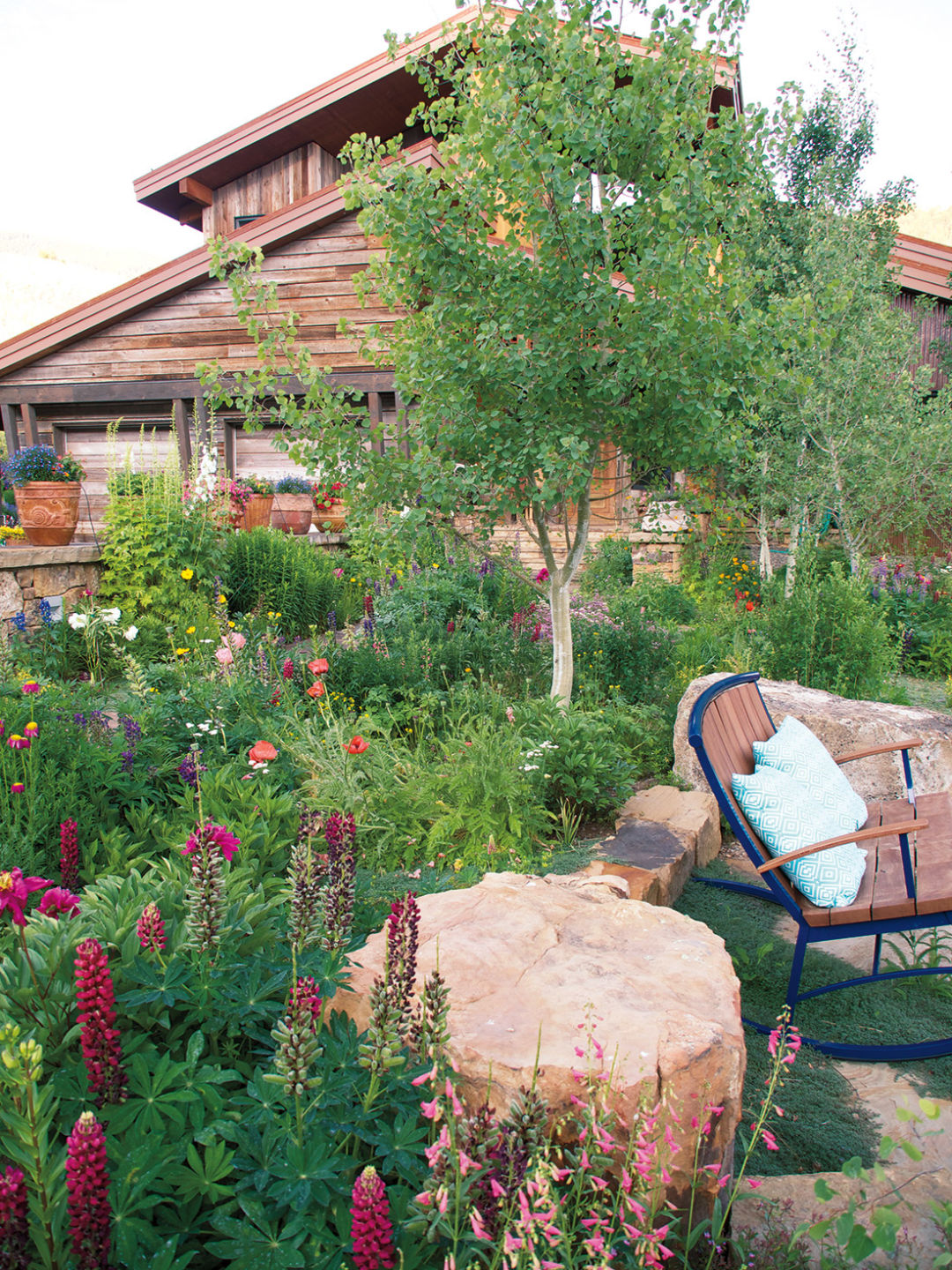
Image: Jason Dewey
The biggest problem was the soil: it was very alkaline, red as fire, about as pliable as lava, and starved of nutrients. I started researching how to change its composition without removing the existing soil, and I stumbled into a whole new world. My husband would find me passed out in bed with agricultural extension pamphlets and books, spine down, with titles like Composting Reform, Your Worms and You, and The Revolutionary Microorganism. I read everything in the local library about gardening in our climate, talked to as many gardeners as I could, and devoured old gardening books by the score. A friendly neighbor started dumping all of his manure and organic debris on our property.
In the fall, I roamed through the tree-dense neighborhoods of Aspen collecting leaves stuffed in bags. My children often commented on the aroma in the car. We started several large-scale compost piles and then used wheelbarrows to spread the finished product all around the garden area. We slowly changed the soil’s composition from the top down, which is not only possible but also more earth-friendly. It just takes patience. And sharp tools.
Initially, the soil was so hard we had to use a pickax and a beast of a rock-grinding tool that a salesman macabrely dubbed a “bone-crusher.” I ordered hundreds of earthworms, much to the horror of our postmistress, to till the soil as we introduced heaps of organic material, including all of our kitchen waste, into the garden.
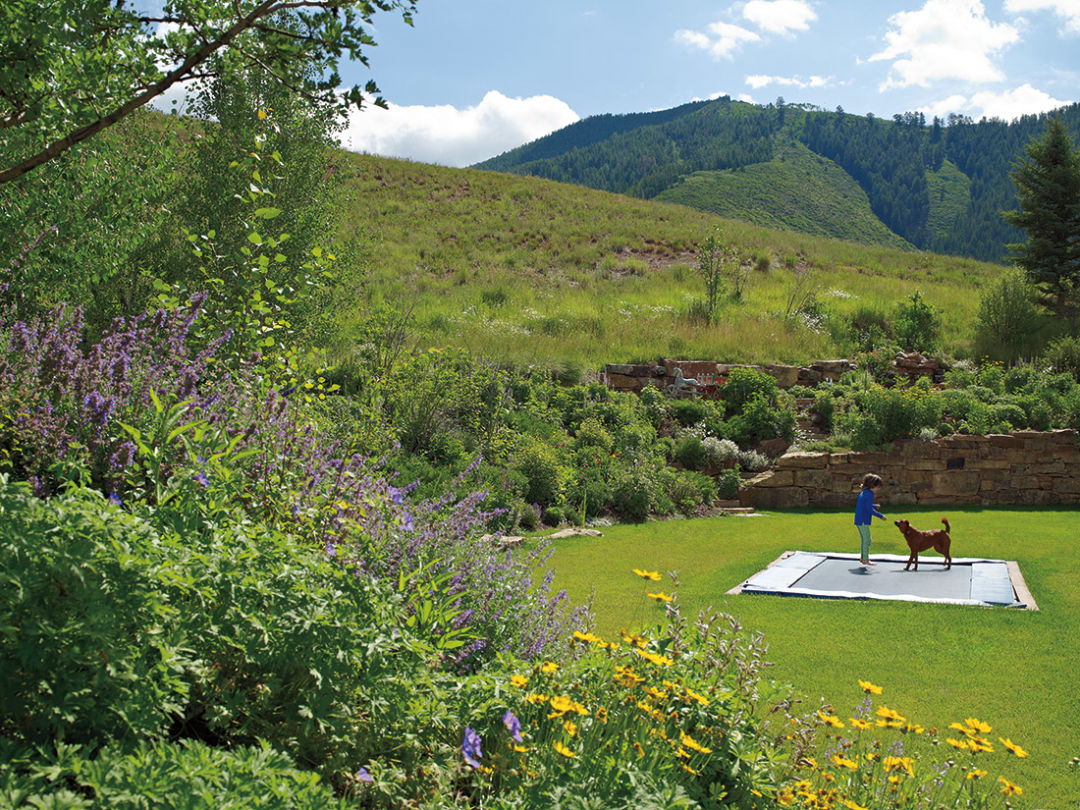
Image: Daniel Shaw
I spent every spare moment working in the vast space, with kids galloping about, and fashioned our first vegetable plot by using flattened cardboard boxes and newspaper to choke out weeds and grass.
One day, our daughter’s friend was watching me bury compost and asked what on earth I was doing. “Cat composting,” my eight-year-old blithely replied, using the quaint term for hand-buried compost. Thinking I was burying live cats in the garden, her young friend was horrified. Even after clarification, she regarded me with some suspicion, though she continued to come over.
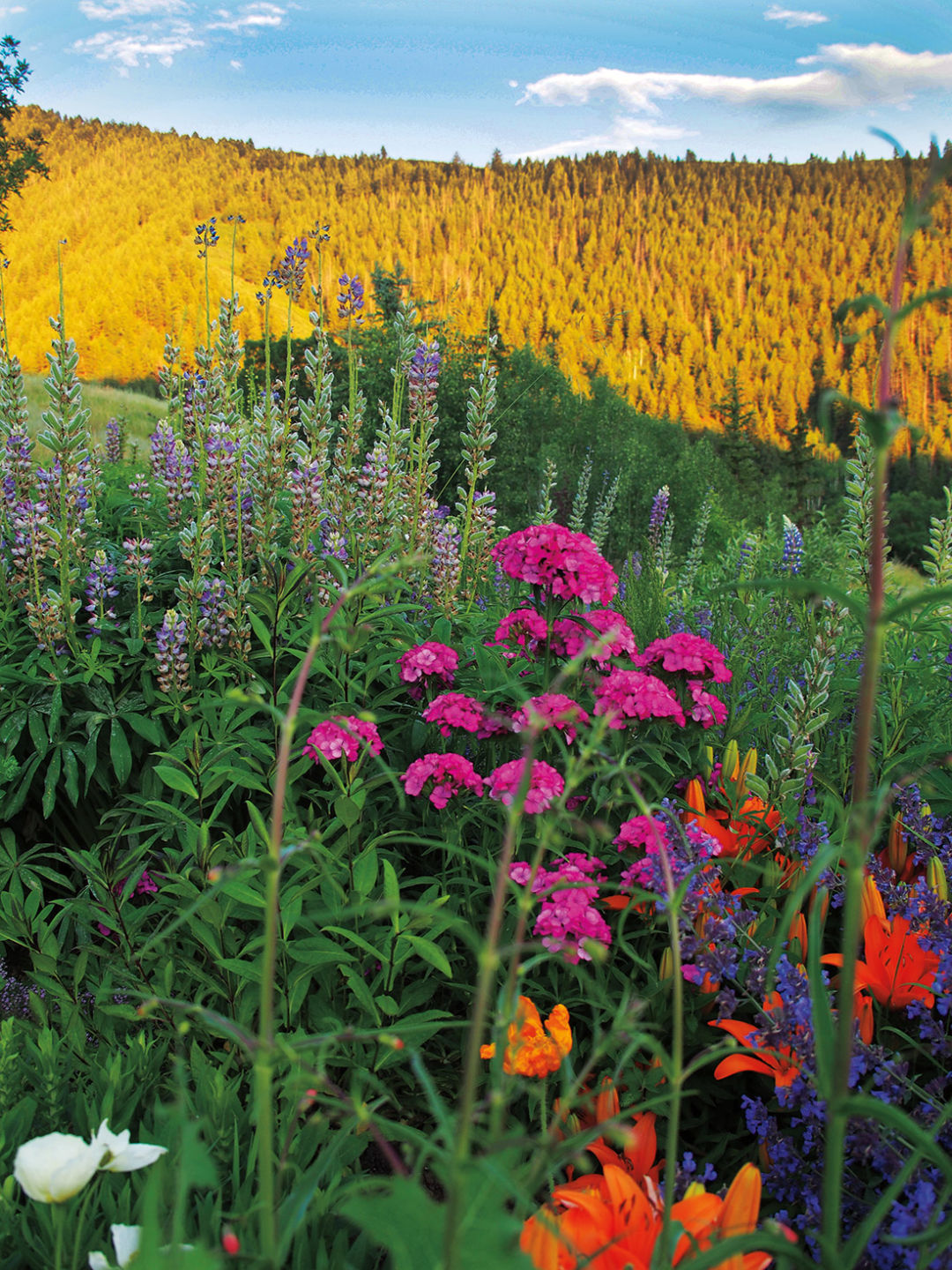
Image: Daniel Shaw
When my mother died in the fall of 2009, I asked my husband for a different kind of Christmas present. Our gardens were improving, and though I could change the soil from the top down, I could not replace trees and plants while avoiding back surgery. I really needed professional help. As always, he was accommodating, and we scrutinized our budget and talked to the bank. Then we called Sheri Sanzone and Christine Shine of Bluegreen, an architectural-design firm in Aspen. They embraced, or at least tolerated, my soil fanaticism and somewhat unorthodox approaches to garden design. Their eyes didn’t glaze over when I talked about composting, and they understood I was wary about hiring a designer. Together we crafted a plan to finish the garden and install an irrigation system that functioned.
To our amazement, the soil was almost perfect. If anything, it was too rich in compost. I wanted a garden that was not rigid, that accommodated the drift of seeds and changed from season to season. I did not want to cut the garden back in the fall, preferring the local wildlife to have a food source all winter. I continued to bury compost to foil the bears, magpies, coyotes, and dogs, while spreading composted material between the perennials in the spring before they got too big. When we finished, the garden was a marvel, though it will always be a work in progress, a shifting composition.
Our garden brought me unexpected perks. It did not eliminate belly fat or dramatically change thigh circumference, but the benefits have been far more rewarding. It took me some time to understand, but bringing my garden back was a way of bringing my mother back. She had a magnificent garden of her own, and I gathered many of her seeds shortly after she died to continue her legacy. Her delphinium, Echinops, Shasta daisies, echinacea, red lupine, and Trollius have naturalized and flourished all around us, and when I move among these descendants, I am with old friends. Later, the garden provided sanctuary for my father the summer before he died. He had little energy for society, but he liked to read and nap in the shade overlooking the work I’d done.
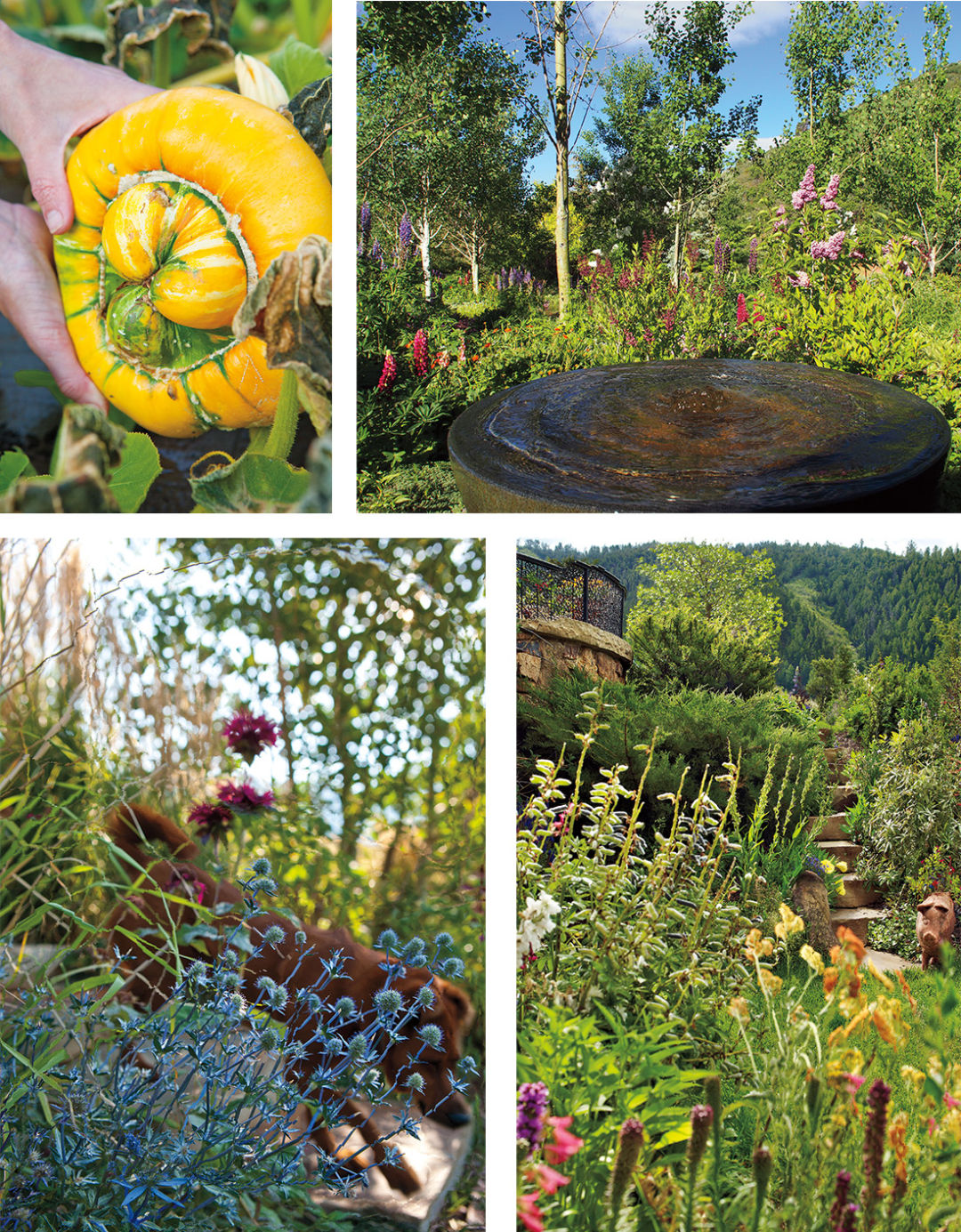
Clockwise from top left: Two vegetable gardens produce a grocery store’s quantity of bounty. A fountain only adds more tranquility to the Zen-like environs. The home’s existing architecture fits the end design perfectly. Eryngium and monarda complement Luna’s red coat. Fountain photo by Daniel Shaw. Other photos by Jason Dewey.
Another benefit of my efforts has been a more complex ecosystem. Our garden is now flooded with bees, hummingbirds, bluebirds, and migratory surprises such as tanagers, grosbeaks, lazuli buntings, western tanagers, finches, towhees, and warblers by the dozen. Before, it principally harbored robins and magpies.
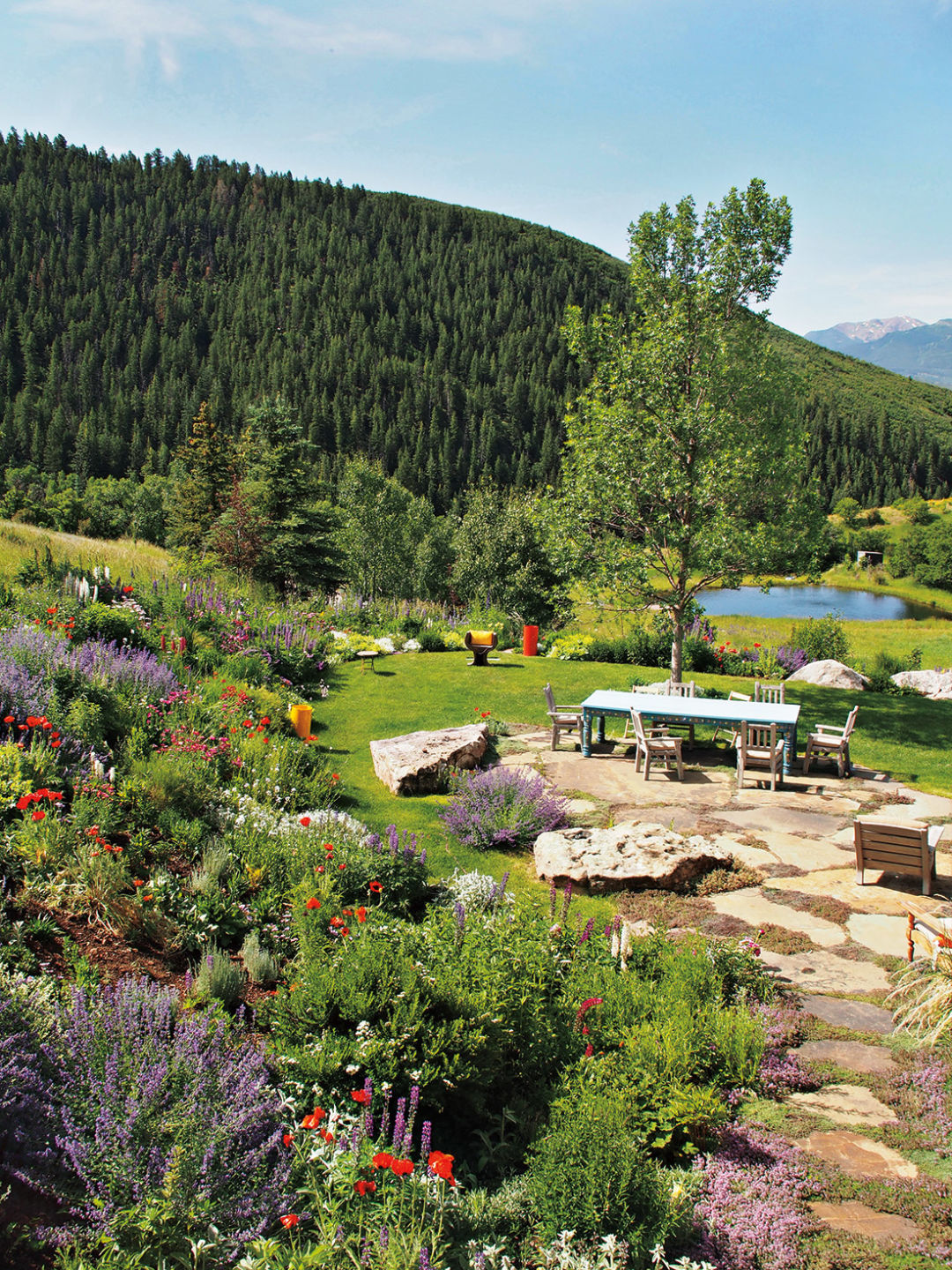
The eastern and southern perennial gardens dazzle with color.
Image: Jason Dewey
I wake up with them when the light expands in both spring and summer and immediately stroll the garden to see what is changing. Having a garden has slowed my pace and made me more deliberate and patient—two qualities I have long needed to cultivate. When I teach painting classes, I often dwell on the importance of process and process and more process. The garden reminds me how cheap talk is and how to cherish process outside of the studio.
Serious gardening has changed me in other ways. I now prefer shopping in garden nurseries to boutiques, and my idea of personal growth entails expanding my drift of agastaches or adding another apple tree or, someday, building a greenhouse.
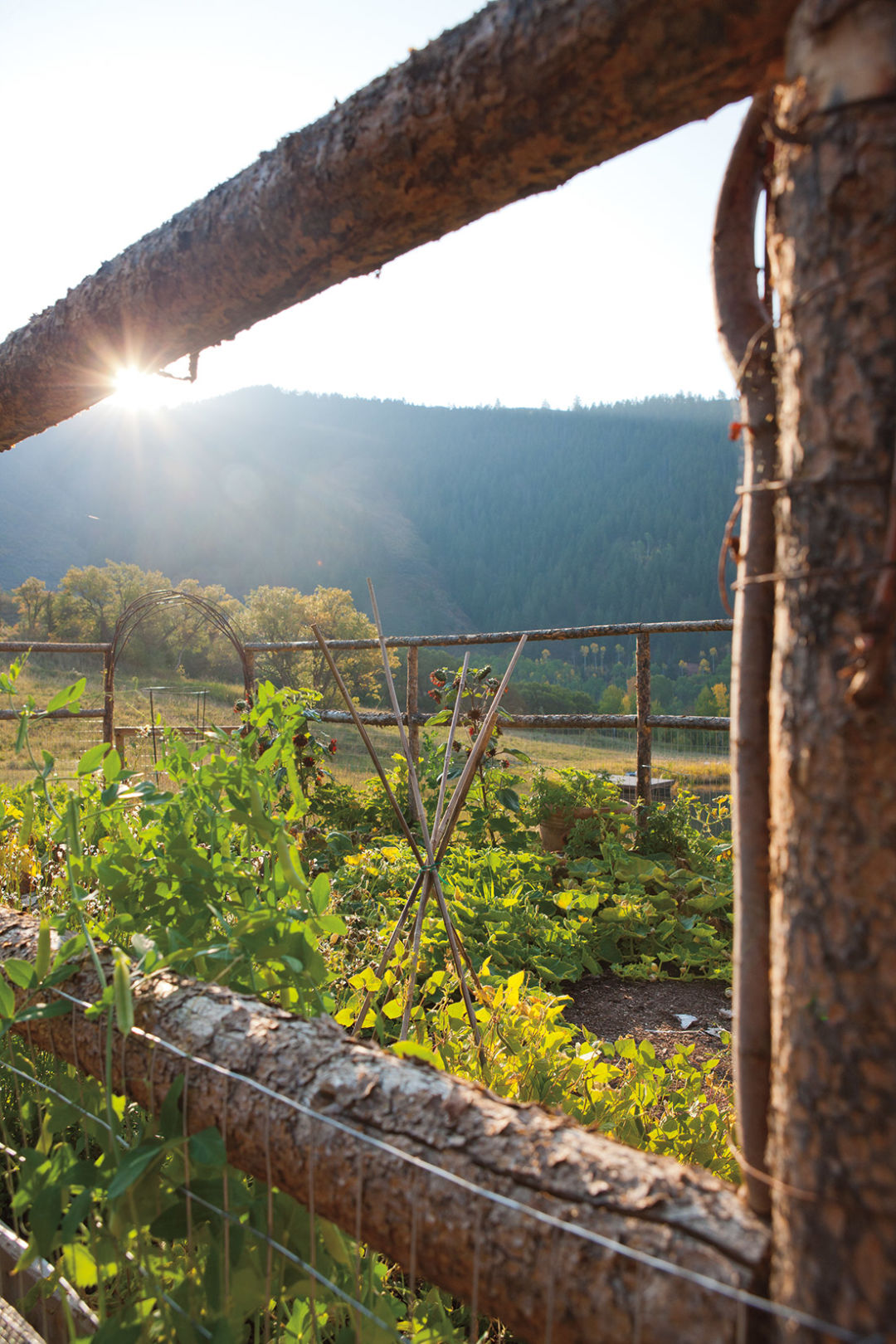
Image: Jason Dewey
And then there’s the very simple joy that comes with plucking dinner every night out of the vegetable garden and sending friends home with extra bounty. It is work to grow food at 8,000 feet but also entirely possible if you are willing to cheat the seasons by dedicating every sunny windowsill to seedlings until the last frost is over and by using row covers to protect delicate plants once they’re in the ground. I have yet to produce a watermelon, but hope springs eternal.
A few years ago one acquaintance asked me what I had done with my summer. I told her we stayed put and that I gardened and goofed off with the kids in the yard. She quickly edged away, but I cannot deny I am a homebody and hopelessly un-chic. Finally, gardening, along with parenting, keeps you humble since you are constantly reminded of your limitations. The bonus is that the garden doesn’t talk back the same way that my kids do.
Our garden not only helped me vanquish feelings of betrayal, but also, and most important, it helped me grapple with the grief of losing my mother prematurely to cancer, and then my father two years later. There is great peace in coaxing growth out of the soil. With an abundance of help and determination, we have a garden that is a moveable feast from season to season. And that is a delight.
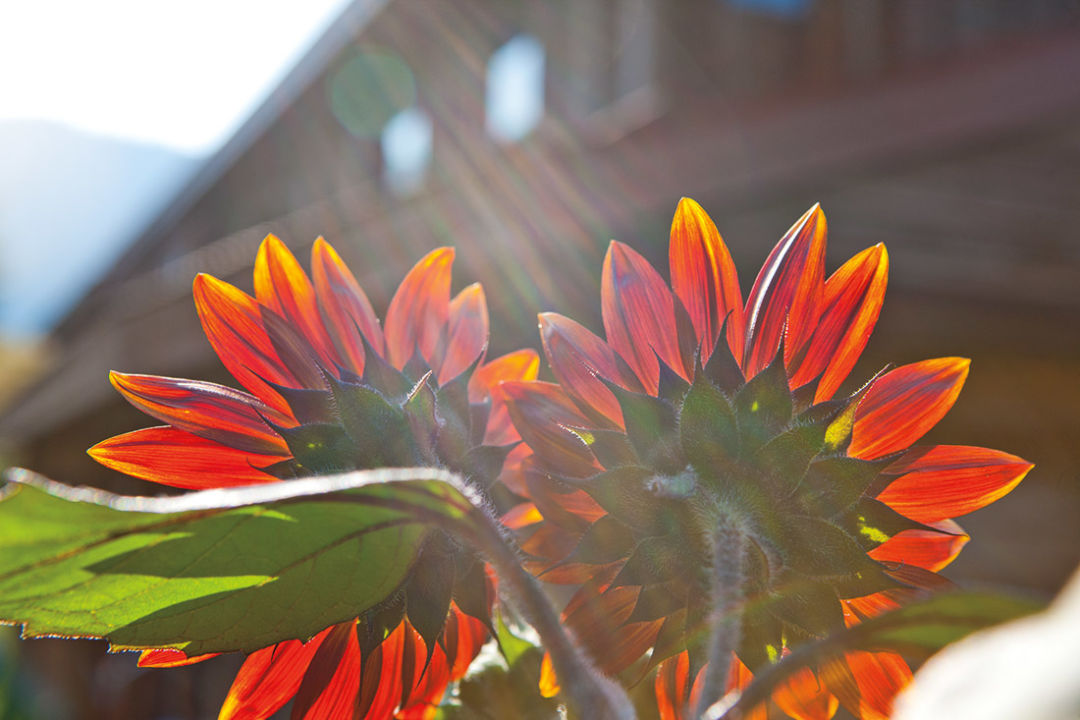
Image: Jason Dewey














































